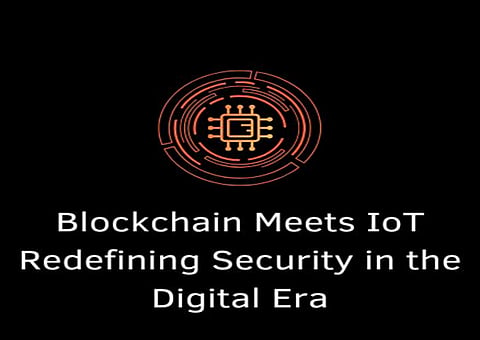

In the digital world, the integration of blockchain with the Internet of Things is a new approach to an integrative solution for security issues in interconnected systems. Authored by Gokul Balaguruswamy Naidu, this article examines pioneering innovations toward improving device authentication and data integrity while enhancing an overall system's security. With a profound background in IoT and blockchain research, the article thoroughly shows off cutting-edge technological integration, which may soon transform digital ecosystems.
In many ways, adoption in IoT today has reached astronomic proportions but still shows enormous vulnerabilities. Among more than 75% of the devices applied for IoT technology, security aspects, including forced access and altered data, create great concerns with respect to potential weaknesses. Typical security models most often fail where it counts—highly developed applications on scales—when implementing solutions that offer decentralization capabilities, using its mechanisms for secure cryptography and single points of failures as well as weak authentication models.
Blockchain's decentralized architecture fundamentally transforms IoT security, as control and data are spread across multiple nodes. This obliterates dependence on centralized systems, which have been the focus of most cyberattacks. The blockchain-based systems achieve near-perfect uptime rates of 99.999%, reducing downtime and enhancing system reliability. Moreover, decentralized control mechanisms enhance resilience against targeted attacks, reducing vulnerabilities by 75%.
The key benefit of blockchain technology is an immutable ledger that promises data integrity no one else can match. A transaction in this system is always cryptographically connected and time-stamped to generate a safe, tamper-proof record. The immutability of IoT systems helps minimize risks of data manipulation, which might be quite detrimental in settings requiring real-time data accuracy. Blockchain-based IoT systems have proven effective in data transmission protection with 99.99% success in preventing unauthorized access.
Smart contracts—self-executing protocols embedded in the blockchain—are revolutionizing IoT operations. The critical functions of device authentication and the enforcement of security policies are automated, thus eliminating 80% of manual intervention, enabling real-time threat detection and response, and, thus eliminating delays, isolating compromised devices in milliseconds.
Scalability is still one of the main issues in blockchain-IoT integration. Blockchain systems are not scalable enough to handle the large number of transactions characteristic of IoT networks. However, recent innovations, such as lightweight blockchain protocols and advanced consensus mechanisms, have been able to achieve remarkable results. These solutions reduce processing requirements by 70%, enabling IoT systems to manage up to 100,000 connected devices seamlessly.
Energy is the most challenging area to deal with within blockchain-IoT ecosystems, especially for resource-constrained IoT devices. With the emergence of optimized consensus protocols such as Proof of Stake, energy consumption has really come down to up to 85%, thereby highly elongating the operational lifespan of IoT devices, reducing the exploitation of energy, and saving the maintenance cost on a large scale. These developments have made blockchain-IoT integration sustainable, enabling long-term efficient and environmentally friendly operation in interlinked systems.
One of the most significant barriers to the widespread adoption of blockchain-IoT systems has been the lack of unified standards, creating challenges in seamless integration and efficient operation. However, recent advancements in protocol standardization are addressing this issue, offering a promising path forward. These efforts have sought to create standardized communication protocols between blockchain networks and IoT devices, thereby making connectivity easier and reducing integration complexities by a remarkable 50%. By simplifying these processes, organizations are now able to accelerate deployment timelines significantly. In addition, these standardized approaches have enhanced system reliability, paving the way for more robust and scalable blockchain-IoT ecosystems in the future.
Emerging technologies are significantly expanding the potential of blockchain-IoT integration, addressing long-standing challenges while unlocking new opportunities. Quantum-resistant cryptography strengthens security by safeguarding systems against future threats posed by quantum computing advancements. Meanwhile, AI-driven analytics empower predictive maintenance, allowing for early detection of issues and enabling real-time, data-informed decision-making. Moreover, the integration of blockchain with edge computing enhances the scalability of this system by processing data closer to its source. This reduces latency and enhances system responsiveness. Together, these innovations promise to change the way interrelated systems operate, ensuring better efficiency, reliability, and security in the digital age.
In a nutshell, Gokul Balaguruswamy Naidu points out that decentralized architectures, immutable data ledgers, and smart contracts address critical vulnerabilities in IoT ecosystems. While challenges like scalability and standardization persist, continuous advancements promise more secure and efficient interconnected systems. Innovations in areas such as quantum-resistant cryptography and AI-driven optimization underscore the immense potential of blockchain-IoT integration. This evolving landscape signifies transformative impacts across industries, ensuring a future defined by enhanced security, operational efficiency, and sustainable technological solutions.
